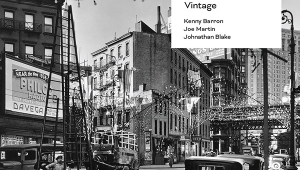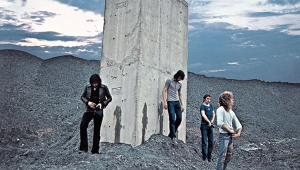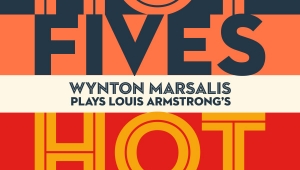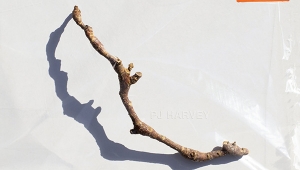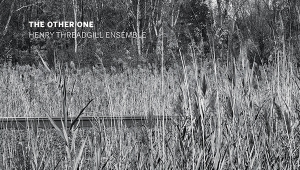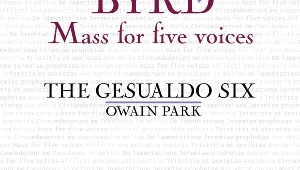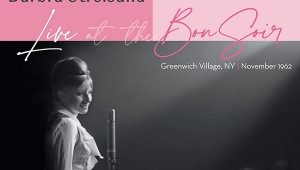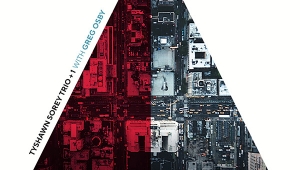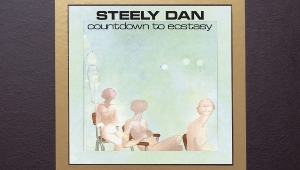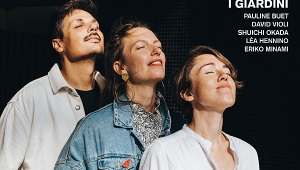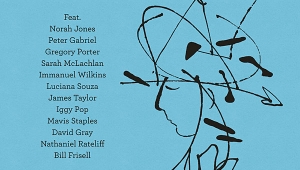| Columns Retired Columns & Blogs |
Recording of January 1999: ¡Jácaras!
SANTIAGO DE MURCIA: ¡Jácaras!
Paul O'Dette, Pat O'Brien, Steve Player, baroque guitars; Andrew Lawrence-King, harp, psaltery; Pedro Estevan, percussion
Harmonia Mundi 907212 (CD). 1998. Robina G. Young, exec. prod.; John Hadden, prod., eng. DDD. TT: 78:21
Performance *****
Sonics *****
Like rock, these dances were considered threateningly lewd by the moral custodians of their time. Consider Miguel Francisco de Steinera's depiction of the cumbée: "The dance is done with gestures, shaking, wiggle-waggling, and swaying of the hips—all contrary to common decency and a bad example for those who attend in order to watch and to be in the middle of it all. They fondle each other, weave together, embrace arm in arm, and dance belly to belly." Or Casanova's description of the fandango: "This dance is the expression of love from beginning to end, from the desire to the ecstasy of enjoyment. It seemed to me impossible that after such a dance the girl could refuse her partner."
Paul O'Dette, Pat O'Brien, Steve Player, baroque guitars; Andrew Lawrence-King, harp, psaltery; Pedro Estevan, percussion
Harmonia Mundi 907212 (CD). 1998. Robina G. Young, exec. prod.; John Hadden, prod., eng. DDD. TT: 78:21
Performance *****
Sonics *****
"This really rocks!" John Atkinson commented as he handed me ¡Jácaras! during our search for January's "Recording of the Month." A strange accolade, you might think, for a recording of 18th-century music for baroque guitar, harp, and psaltery, but an apt one. This music does rock. It is, first and foremost, dance music: fandangos, jotas, cumbées, and bailes—and it has the relentless rhythmic drive that has always characterized popular dance music, no matter what its country or era of origin.
 | |
Definitely rock'n'roll.
Santiago de Murcia was probably born in Madrid around 1682. It is not known where or when he died, but he led an active life. He studied guitar with Francisco Guerau between 1690 and 1700, traveled with King Philip V to Naples (where he probably met Scarlatti and Corelli), was Guitar Master to Queen Maria Luisa Gabriela of Savoy, and probably traveled to Mexico around 1720. "Probably" because, while his name appears on no travel documents, the three surviving collections of his guitar music were found in Mexico, and his works appear in several Mexican sources.
What is certain is de Murcia's fascination with a wide variety of musical styles—he composed works in the styles of Italy, Spain, France, Mexico, and even West Africa. This gives ¡Jácaras! a variety unusual in an instrumental collection dedicated to a single composer. Most of the pieces here are bailes, a dance form introduced in the early 17th century, but the spirited fandangos, exotic cumbées (introduced to Mexico by West African slaves), and jotas add spice and fire to the proceedings.
For all of the foreign influences in these compositions, no one listening to this disc could mistake it for anything but Spanish. All of the elements that have come to typify our romantic notion of Spanish guitar music already exist in de Murcia: the plucked line (punteado) alternating with the strummed (rasgueado) chorus; the slurred estrasinos and the bell-like campanelas; and that most Iberian of effects, the percussive golpe.
Paul O'Dette seems as much at home on baroque guitar as he does on lute—that is to say, it's difficult to imagine this music played any better. Andrew Lawrence-King's harp and psaltery add beautifully bright contrast to the mellow sound of the guitar, and the two musicians seem to frolic as they trade melodic lines back and forth.
Hesperion XX's Pedro Estevan adds percussion as necessary: hand-claps, foot stamps, castanets, and tambourine. He's tasteful and very tuneful; this would be a much less exciting recording without him. Pat O'Brien and Steve Player, from the Harp Consort, add guitar support in the ensemble portions, and pull off the rather nifty trick of reinforcing the guitar sound without blurring it.
As good as the music and performances on ¡Jacaras! are, it is the sound of this disc that makes it so very special. The guitars and harp are recorded with extraordinary warmth and clarity in a beautifully engaging acoustic, Holland's Valkkoog Church. Estevan's percussion reveals it to be a large hall with an extremely clean decay. It sounds clear and articulate, and supports the delicate sound of the guitars without interfering with the rhythmic momentum of the dances.
De Murcia rocks.—Wes Phillips
- Log in or register to post comments


